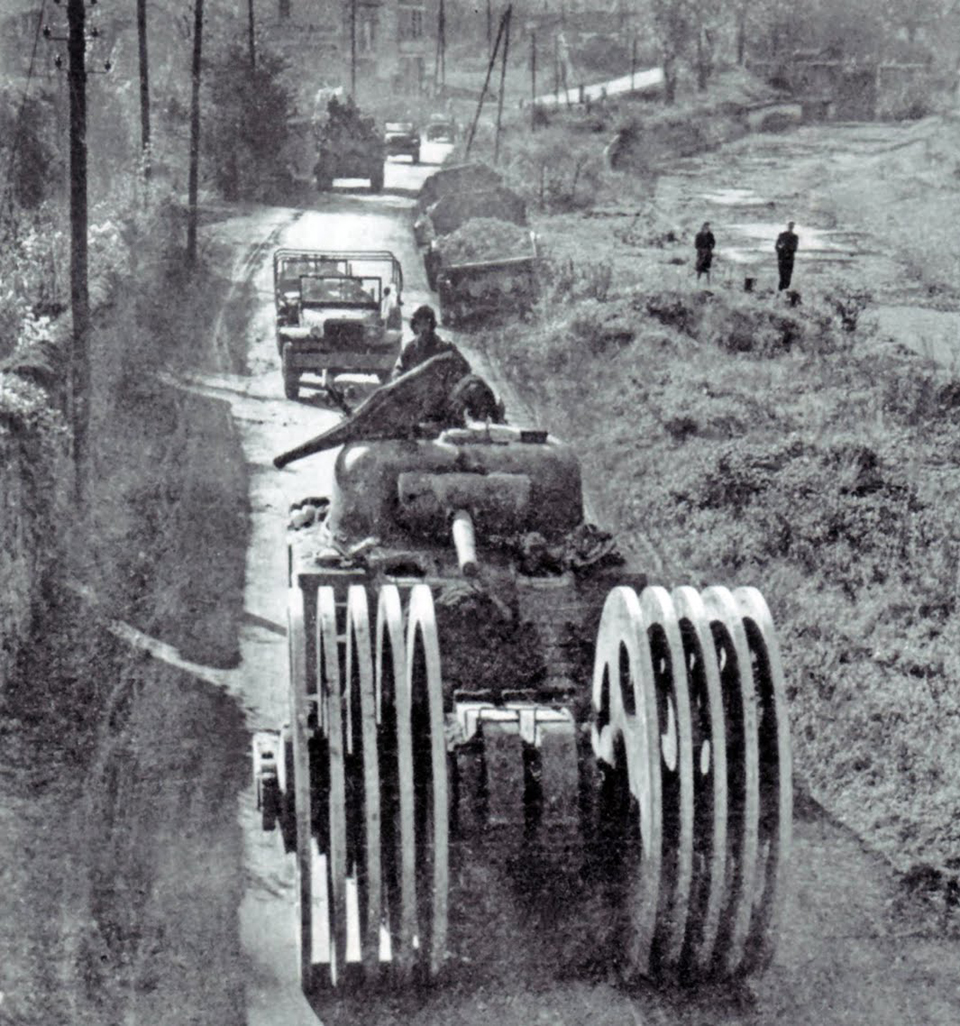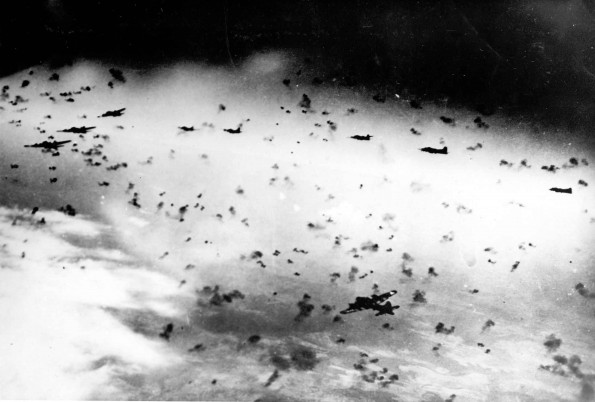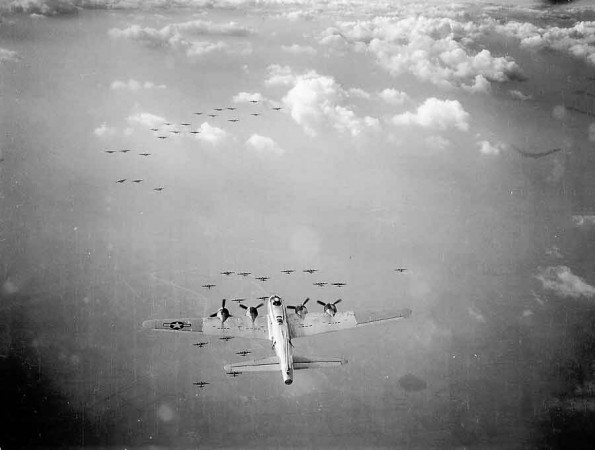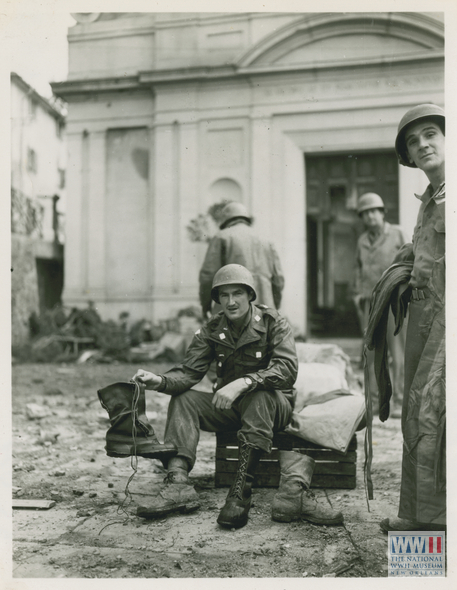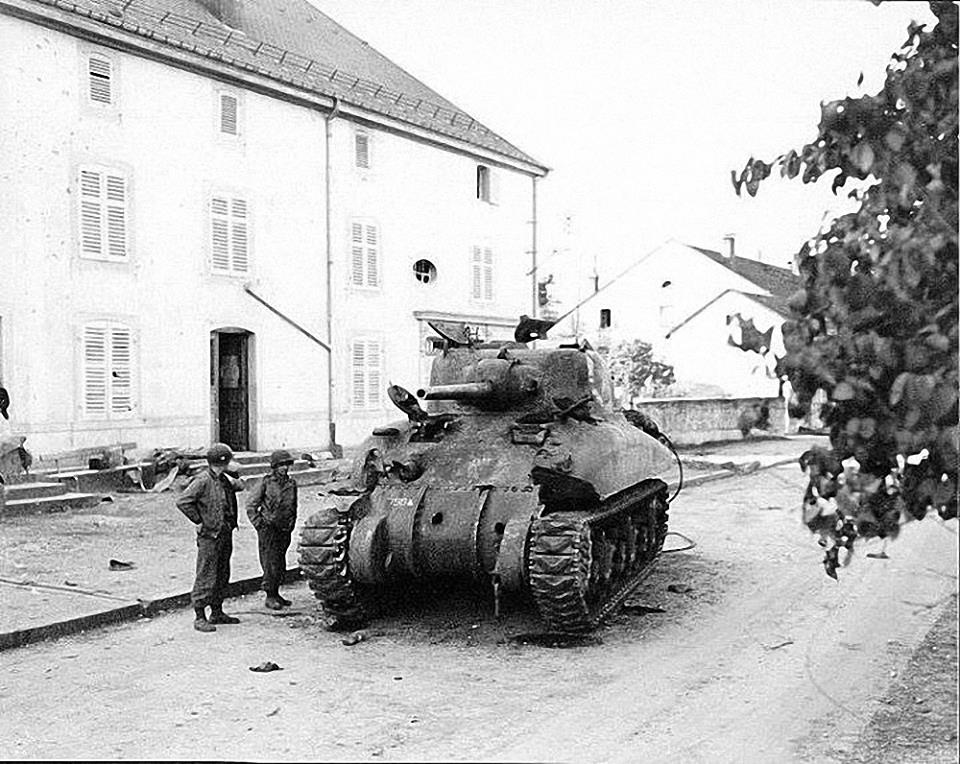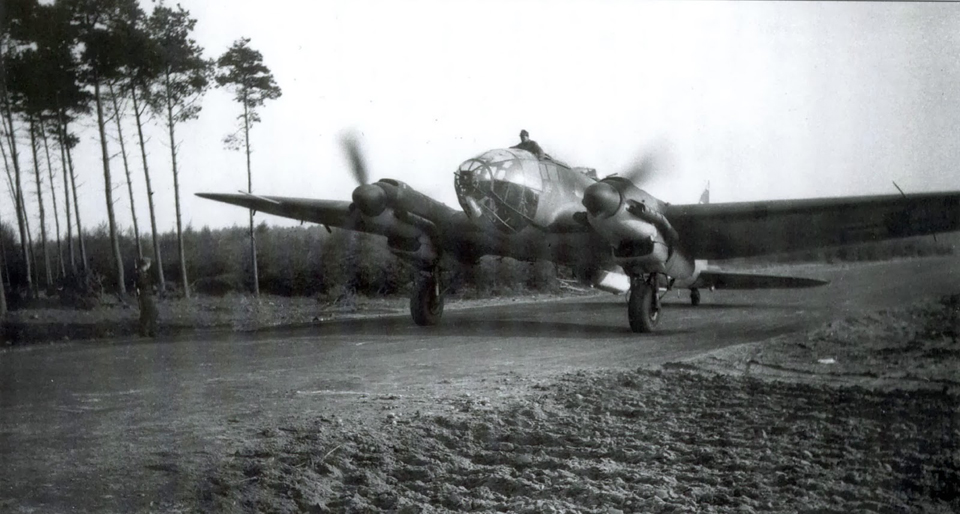Air Operations, CBI
BURMA- 5 10th Air Force P-47s attack troops and stores at Man Hpa.
- 53 14th Air Force fighter-bombers attack numerous targets in south-central China.
- P-51s of the 23rd Fighter Groupís 74th Fighter Squadron down 3 Ki-43 'Oscar' fighters over the Erh Tao Kow airfield at Chiuchiang.
Air Operations, East Indies
- FEAF B-25s attack Amboina and Langoan, Tompaso and Tondegesang on Celebes.
- FEAF P-38s attack Kaoe on Halmahera and fuel stores at Boela on Ceram.
- A 418th Night Fighter Squadron P-61 crew downs a Ki-46 'Dinah' reconnaissance plane near Morotai at 0335 hours.
Air Operations, Europe
RAF BOMBER COMMANDDaylight Ops:
- 351 aircraft of Nos. 3, 4 and 8 Groups are sent to bomb the small German town of Kleve. Included in the aircraft total are 251 Halifaxes, 90 Lancasters and 10 Mosquitos. Kleve, along with Emmerich, stands on the approach routes by which German units can threaten the vulnerable Allied right flank near Nijmegen which had been left exposed by the failure of Operation MARKET GARDEN. Visibility is clear and the center and north of the town are heavily bombed, although some crews bomb too early and their loads actually fall in Holland near Nijmegen.
- 2 Halifaxes are lost.
- 340 Lancasters and 10 Mosquitos of Nos. 1, 3 and 8 Groups carry out an even more accurate attack on Emmerich.
- 3 Lancasters are lost.
- 121 Lancasters and 2 Mosquitos of No. 5 Group continue the attack on Walcheren Island. The sea walls which are breached near Flushing.
- There are no losses.
- In another No. 617 Squadron special operation, the Kembs Dam is hit. The Kembs Dam on the Rhine, just north of Basle, holds back a vast quantity of water and it is feared that the Germans would release this to flood the Rhine valley near Mulhouse, a few miles north, should the American and French troops in that area attempt an advance. The Squadron is asked to destroy the lock gates of the dam. 13 Lancasters are dispatched. 7 aircraft are to bomb from 8,000ft and draw the flak, while the other 6 will come in below 1,000ft and attempt to place their Tallboys, with delayed fuses, alongside the gates. American Mustang fighters will attempt to suppress flak positions during the attack. The operation goes according to plan. The gates are destroyed but 2 Lancasters from the low force are shot down by flak.
- 2 Hudsons are on Resistance operations, and there are 2 Ranger patrols and 5 RCM sorties.
- 46 aircraft of No. 100 Group fly an operation in which various electronic devices and 'Window' are used in an attempt to lure the German night-fighter force into the air to waste its fuel. The feint is made in the direction of Bremen, using the same route as had been used in the raid carried out the previous night. Radio listening stations in England hear the German controllers plotting the supposed force 'vigorously', but few night fighters are scrambled. Mosquito Intruders and Serrate aircraft, which are part of the No. 100 Group force, then fly on towards Bremen and claim an Me-110 destroyed and a Ju-88 damaged. 1 further RCM Halifax flies a signals listening patrol.
- No aircraft are lost on this night.
GERMANY:
- On this record-setting day, the 8th Air Force heavy bombers mount 1,401 effective combat sorties: 142 1st Bomb Division B-17s attack oil-industry targets at Politz; 59 1st Bomb Division B-17s attack an oil-industry target at Ruhland; 259 1st Bomb Division B-17s attack various targets of opportunity; 129 2nd Bomb Division B-24s attack an oil-industry target at Merseburg; 88 2nd Bomb Division B-24s attack an oil-industry target at Lutzkendorf; 86 2nd Bomb Division B-24s attack an oil-industry target at Bohlen; 102 2nd Bomb Division B-24s attack various targets of opportunity; 122 3rd Bomb Division B-17s attack a motor-transport factory at Kassel; 88 3rd Bomb Division B-17s attack two oil-industry plants at Magdeburg; 149 3rd Bomb Division B-17s attack various targets of opportunity.
- Due to extremely heavy and accurate flak coverage (which is now using H2X emissions to track the bombers) 40 heavy bombers are lost; 11 of 521 VIII Fighter Command escort fighters are also lost
GERMANY:
- 9th Bomb Division B-26s attack a supply depot at Euskirchen and bridges at two locations.
- All three 9th Bomb Division A-20 groups attack ten military-stores warehouses at a marshalling yard at Trier.
- 8th and 9th Air Force fighter pilots down 38 Luftwaffe fighters over Germany between 1005 and 1640 hours.
- 9th Bomb Division bombers attack a marshalling yard at Hengelo and bridges at Arnhem.
ITALY:
- 12th Air Force medium bombers are grounded by bad weather, but fighter-bombers attack gun emplacements and defensive positions on the battle front and communications targets to the north.
AUSTRIA:
- More than 350 15th Air Force B-17s and B-24s attack oil-industry targets around Vienna.
- Approximately 30 15th Air Force B-17s and B-24s attack targets of opportunity in Hungary, including the airdrome at Gyor.
Air Operations, New Guinea
V Bomber Command B-25s and V Fighter Command P-38s attack Doom Island and the airfield at Babo.
[Air Operations, Philippines
- Following a dawn strafing attack against Wolfe Field at Zamboanga by 1 VB-101 PB4Y, which accounts for at least 1 G4M 'Betty' bomber and 4 floatplanes destroyed, 19 V Bomber Command B-24s attack targets near Zamboanga City on Mindanao and 39 8th Fighter Group P-38 escorts attack the San Roque airfield on Mindanao, 3 cargo ships, seaplanes, and other targets of opportunity in the area.
- This is the first mission to the Philippines on which escort fighters are dispatched. The P-38s are based at the Wama airfield on Morotai.
Eastern Front
The Russian 14th Army attacks in northern Finland.
FINLANDThe Soviet 14th Army (96,806 men), Karelian Front, commences the Petsamo-Kirkenes Offensive against the German XIX Mountain Corps (56,000 troops) aimed at clearing the Germans from the Murmansk sector. Soviet preparations have been thorough and Lt-Gen Shcherbakov's 14th Army has substantial support for the operation. This includes a total of 2,100 mortars and artillery pieces plus 120 multiple rocket launchers. Air support consists of 747 bombers, ground-attack aircraft, fighters and reconnaissance types (German aircraft in this sector number 160). In the absence of suitable roads, many of the supplies needed to sustain the offensive will be transported by animals. To this end the 14th Army has 141 horses and over 500 reindeer. In addition, dogs are on hand to detect wounded soldiers left on the battlefield, who will be removed on sleds, litters and flat-bottomed boats to field stations.
The offensive commences at 8am with an artillery barrage, the Soviets firing over 100,000 rounds in 150 minutes. Then the infantry of the XCIX and CXXXI Rifle Corps attack, the CXXXI Rifle Corps breaks through German positions to establish a bridgehead on the west bank of the Titovka River, but the XCIX Rifle Corps struggles to advance in the face of determined opposition.
NORTHERN SECTORArmy Group North pulls its force back through Riga as it continues the evacuation of territory east of the city. To the southwest, the 5th Guards Tank Army reaches the outer suburbs of Memel. The 43rd Army is advancing behind the 5th to provide support.
[Italy
In the eastern sector, the V Corps of 8th Army opens an offensive against the Rubicon. On the left of the Allies line, units of the US IV and II Corps advance in the Monte Stanco, Castelnuovo di Bisano and Monte Cavallara sectors.
[Pacific
- US aircraft based in the Marianas carry out the heaviest raids to date on Iwo Jima.
- The US submarine Cabrilla (SS-288) sinks the Japanese transport No.8 Shinyo Maru (1959t) off Vigan, Luzon.
- The US submarine Hawkbill (SS-366) sinks the Japanese cargo ship Kinugasa Maru (8407t) in the South China Sea about 300 miles west of Manila.
- The US submarine Hoe (SS-258) sinks the Japanese army transport Makassar Maru (4026t) in the South China Sea west of Luzon.
Palau Islands
It is decided to suspend for the time being the operations against the Japanese fortified positions on Mount Umurbrogol, Peleliu, following new unsuccessful efforts carried out with tank support by the 5th Marines.
[Western Front
The Canadians have managed to get some of their attacking forces across the Leopold Canal into 2 small bridgeheads, but they are halted there by fierce German resistance. The Canadian 3rd Div of II Corps sends reinforcements to the north bank of the Leopold Canal, but they do not arrive on account of powerful German resistance.
Units of the XX Corps of 3rd Army capture Wormeldange, liberating Luxembourg as far as the Moselle. German counterattaacks in the Maizières-lès-Metz sector, some 6 miles north of Metz, slow down the operations of the 90th Div. During the battle that follows some US units are able to reach the city.
[Images from October 7, 1944
|
|
|
|
|
|
|
|
Red Beach, Los Negros Island |
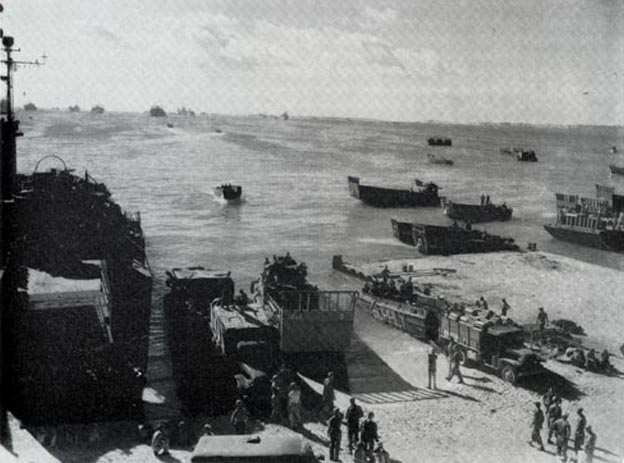 |

